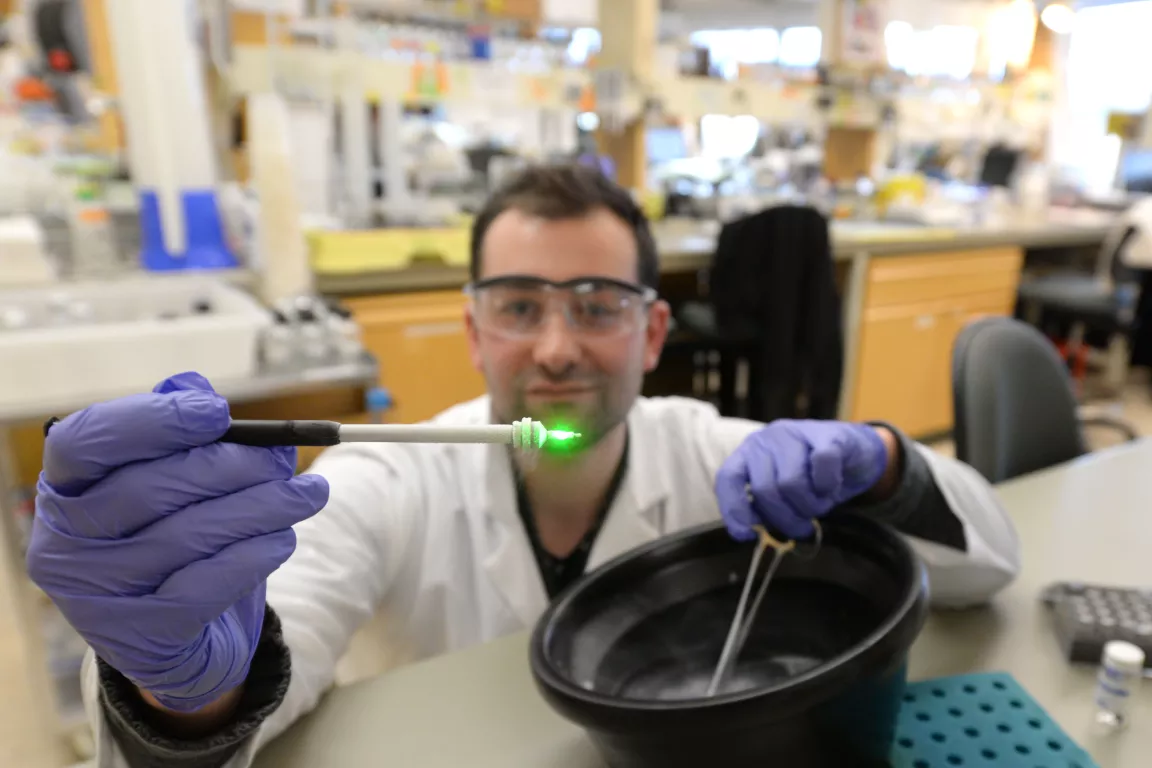RNA Splicing research could lead to better understanding of genetic diseases

UNBCgraduate student Corbin Black is the lead author on a research paper that was published in the international journal Protein Science.
Imagine being able to peer into the atomic structure of a protein, to understand how these tiny machines work, and to gain a better understanding of how to develop new treatments for genetic diseases that can occur when these proteins are damaged.
That’s the work being done at UNBC as researchers have solved the first protein crystal structure at the university. This work allows them to see the location of every atom in a protein, which could help them learn more about the RNA splicing process in humans.
Corbin Black, a UNBC biochemistry graduate student, is the lead author on the research paper, published in the international journal Protein Science. He collaborated with a pair of University of Alberta researchers, Erin Garside, a PhD candidate, and Professor Andrew McMillan, and was supervised by UNBC Chemistry Professor Dr. Stephen Rader.
An algal protein was used since it has simpler splicing machinery – only 40 parts, compared to 250 in humans – making it an easier organism to work with. The concentrated protein was sent to the U of A, where a high quality crystal was grown. It was then frozen with liquid nitrogen and sent to Stanford University to be X-rayed.
“The similarity between our protein, which comes from an alga, and the human protein shows that what we learn about splicing from this alga is likely to be relevant to humans,” said Rader. “And it is a much easier organism to study, so this is a proof of principle for using this organism to determine what splicing proteins look like.”
RNA splicing occurs naturally in humans, but errors in the splicing process have been linked to numerous diseases ranging from cancer to cystic fibrosis to spinal muscular atrophy.
“About 60 per cent of diseases that are caused by genetic mutations are due to problems of splicing,” Rader says. “It is important to understand how splicing works so we can find ways to treat these diseases.”